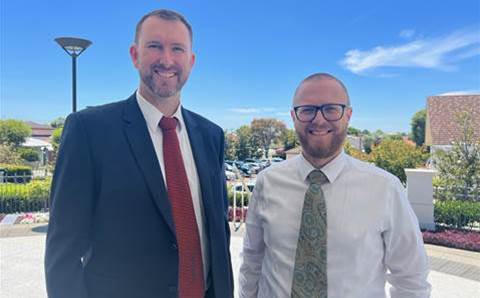How HR is succeeding at transformation amidst extraordinary circumstances

The pandemic may have been a catalyst in making the workforce more virtual and digital than ever before, but workforce transformation started long before COVID-19 hit. In a recent virtual roundtable, HR leaders came together to discuss how they have fared amidst testing times.
The pandemic may have been a catalyst in making the workforce more virtual and digital than ever before, but workforce transformation started long before COVID-19 hit. So when we gathered HR leaders for a conversation, there was much to discuss in terms of how organisations have fared in this extraordinary year, and what they are preparing for ahead.
These discussions took place at the Virtual Chief HR Officer Roundtable curated by Human Resources Online and Workday. This forum was organised to bring together HR thought leaders virtually and dedicate time to sharing their insights on how to navigate this ‘new normal’. Here are the highlights...
1. Employee safety is paramount, giving way to new business models
The HR leaders are in agreement that what we’re witnessing is a ‘new normal’. This brings with it a new set of standard operating procedures around keeping employees safe – from social distancing to weekly disinfection of the workplace – given that work-from-home isn’t an option for several essential or manufacturing industries. As such, the facilities management team has become the “eyes and ears” for HR.
On the broader scale, the new normal has given rise to split operations, multi-locational workplaces, split teams, and all forms of alternative and flexible working arrangements. Even in traditionally conservative industries, for example banking, the culture code is making way for fewer suits and ties and more flexi-hours without seeing any dip in productivity. Thus, mindsets are shifting. Senior management has seen evidence that flexible working doesn’t impact productivity negatively, as long as all other parameters, such as clear job descriptions, are in place. Going forward, expect flex-work to be a permanent feature of the employer value proposition.
While flex-work is picking up pace, return-to-work has been a constant reality especially for the large number of workers in essential services. One organisation tackled the return-to-work very innovatively. The HR team built ‘employee personas’ by clustering the employees as micro groups with common values and common challenges, in order to design the return-to-work journey better. Understanding the employee persona, for instance, whether they use public transport, or do they have kids, helped the HR team map out the employee’s journey and identify the kind of guidance they needed to provide each persona for them to be able to work in the office.
2. Data confidentiality requirements push for a closer working relationship with the CIO
When lockdown first occurred, many organisations found themselves scrambling to equip employees to work remotely – be it in handing out equipment like laptops and phones to providing safe and secure access to the company server from a typically insecure environment, i.e. the employee’s home.
This transition has been relatively easier for companies with an existing remote working policy, and much harder for those on the other side of the spectrum. In both cases, what has happened is that the role of the CIO has come to the forefront. Tasked with helping to set and lead the company’s technology strategy, many CHROs are seeking to cement strong working relationships with their tech peers. The objective is not just to ensure data security and privacy compliance in the short-term, but also to use the CIO’s valuable inputs to build a long-term remote working policy that takes legal, employer and employee considerations into account.
3. Communicate in abundance, in alignment with the leadership team
Communication is the backbone of any good relationship, but in times of crisis like this year, it has become critical to keeping the workforce engaged.
From factual information, such as updates from the Ministries of Health or Human Resources, to company-wide guidelines, over-communication is not a bad thing in the eyes of the HR leaders.
Among some of the steps that they’ve undertaken is the formation of a cross-function crisis management team that provides daily on-the-ground updates; and completes the feedback loop by soliciting employee inputs on the challenges they’re facing. Conducting surveys has also worked well in some cases, where the analysis of the results has given management full confidence in the execution of their plans for the staff.
The journey ahead
A majority of HR leaders today find themselves at a major change crossroads, where they are taking stock of answers to three unavoidable questions:
- How are we investing financially in the technology we’re using?
- How are we investing in our talent?
- Are we going to have the ability to sustain and see these plans materialise – given the parallel demands of the business operations?
It is indeed a high-pressure environment for HR. The road forward requires a lot of clarity from the CHRO on how they will provide the tools to motivate, upskill and engage employees. At the same time, HR leaders are being called upon to work hand-in-hand with business leaders to not only drive projects commercially and secure profitability, but also to contain staff costs.
On this note, we picked the brains of Melissa Bowden, HR Director at Workday, on how leaders can look to sustain the strategic role of HR, now that it has been thrust to the forefront. . She looks at HR as the “connective tissue” between the business leaders and the employees.
“HR is helping to really accelerate relationships between the two. Our team is innovating every day more so than ever. They've learned how to be resilient; providing support wherever needed is the biggest role HR and people managers can play at this time.”
What also helps, particularly in Workday’s context, is the strong employee-led culture built around getting extensive workforce insights, to help craft the decisions that are made.
Bringing Jasie Fon, General Manager at Workday into the conversation, she agreed with Bowden, and added: “HR has never been busier. The function has become a true business partner, working closely with leadership in steering organisation towards the right direction.
“It's all about agility in the new world adjusting to new norms. Together with HR, leadership teams need to charter new ways , and face the uncertainties boldly.”
Evidently, there’s no better time to transform than now.












